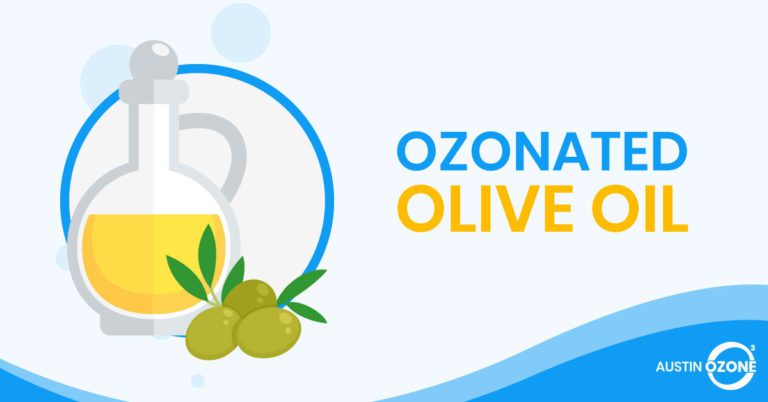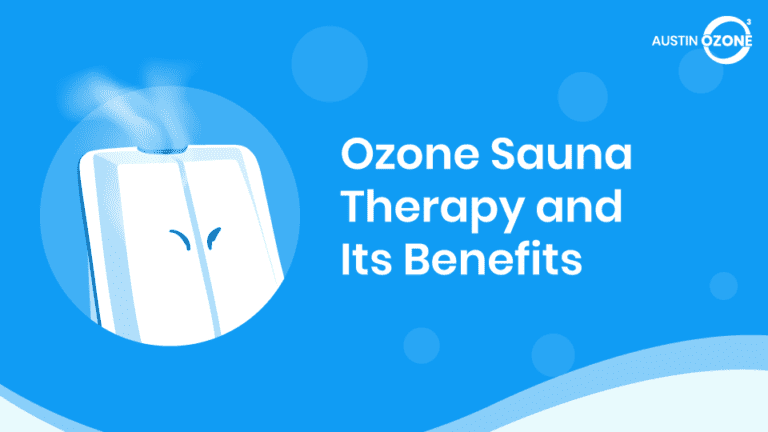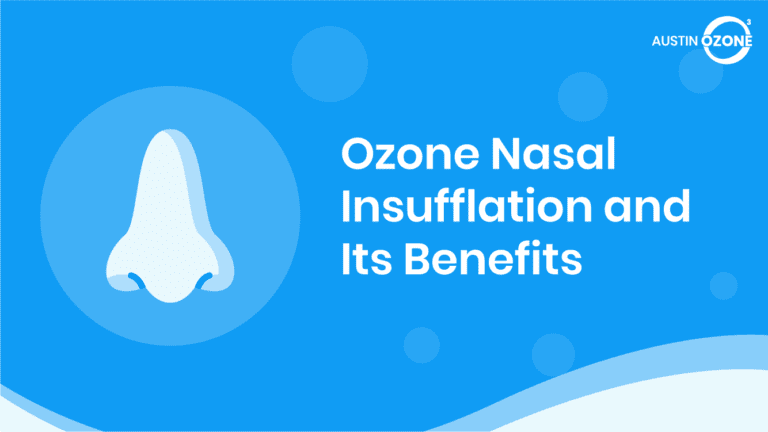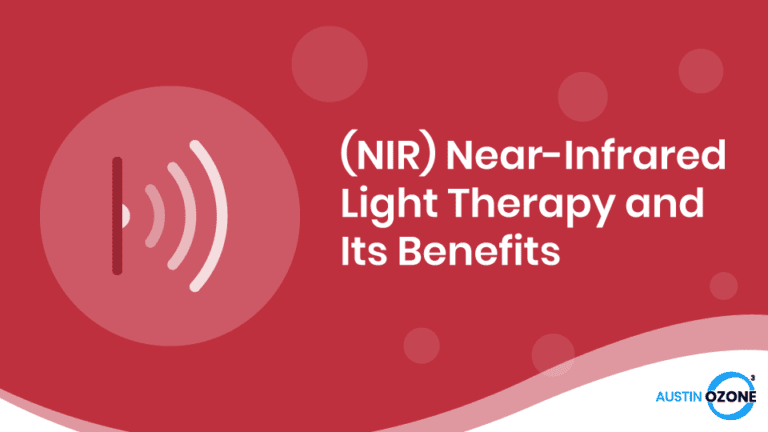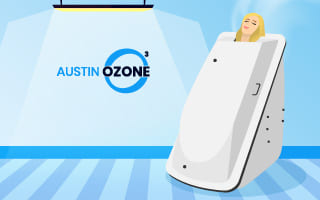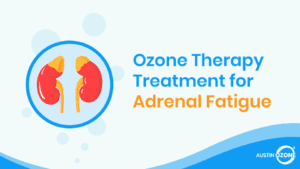Over the years, people have been leaning more towards alternative medicine in treating illnesses and diseases. There are different reasons people choose complementary and alternative treatments over the conventional ones. However, the most cited reason is that alternative medicine seems more natural and non-toxic.
Of the alternative treatments available, ozone therapy proves to be one of the most popular. According to multiple studies8, medical ozone proves to be an effective antifungal, antiviral, and antimicrobial agent.
While ozone gas is impressive by itself, it was found that its therapeutic properties can be further enhanced by adding olive oil. For this reason, ozonated olive oil is widely used for topical skin treatment applications.
Why Olive Oil?
Olive oil9 is considered by most health experts as ‘healthful’ fat. It contains antioxidants, which can help prevent the cell damage caused by free radicals. Olive oil is extracted from the fruits and seeds of an olive tree. Depending on the number of oleic fatty acids, it can be classified as either extra virgin, virgin, and ordinary (refined) olive oil.
Of the three types, extra virgin olive oil is considered the best and healthiest. The oil is extracted through natural means (pressing) to maintain its purity. As such, extra virgin olive oil has the highest number of antioxidants that can help fight some serious skin diseases4. Genuine extra virgin olive oil has a distinct taste and smell.
The fatty acids found in olive oil are said to have anti-inflammatory effects. They can also help lower the body’s blood pressure and cholesterol levels. It is often claimed that people who cook with olive oil have a lower risk of cardiovascular disease.
Anecdotal claims also suggest that olive oil can help relieve skin problems like eczema, surface wounds, burns, and psoriasis. In addition, it is often used as an emollient for delicate, cracked, and dry skin.
How to Produce Ozonated Olive Oil
Ozonated olive oil8 can be produced through different methods. The most common, however, is by bubbling high concentrations of medical ozone through olive oil. Although it may sound easy, the process of manufacturing ozonated olive oil is not that simple. Depending on the ozone concentration and volume of oil, its production can take from three weeks to three months.
There are many ready-made ozonated oils in the market, but there are people who prefer making their own because this guarantees the quality of the product. To produce ozonated olive oil, you would need a medical tank of pure oxygen, a good ozone generator, an ozone-resistant container, and high-quality extra virgin olive oil.
For the ozone generator, you need to use one that can produce high concentrations of ozone. The higher the ozone concentration, the better and more effective the ozonated oil will b
Ozonated olive oil is used not only for medicinal purposes but also for cosmetic ones. Many products can doubly act as a protectant and moisturizer (emollients). They are also promoted as a viable treatment for acne.
If you are using an adjustable ozone generator, you should use the highest setting possible to ozonate the oil. When ozonating, you need to note that only small bubbles can transfer ozone to oil, so you might use some ozone-resistant bubblers to do this.
Ozonated olive oil is created through a redox reaction to produce organic peroxides. You will know that the process is finished when you notice some white foam settling at the bottom. At this point, further ozonation will be pointless as the resulting product will no longer react with ozone gas.
The average time of ozonating olive oil is about three weeks with constant ozonation. Once ozonation is completed, it will turn the slightly greenish, slimy olive oil into a clear, gel-like substance6.
Compatibility of Ozonated Olive Oil With Human Skin
The human skin is considered the largest organ and the body’s first line of defense against microbes and other elements. The skin is composed of three layers: the epidermis, the dermis, and the subcutaneous (hypodermis). Aside from being constantly exposed to environmental stress, the skin also needs to deal with oxidative stress, which happens inside the cells.
An unhealthy lifestyle, coupled with other health conditions, have led to an increase in the number of people suffering from different types of skin infections. While there is a wide spectrum of orthodox antimicrobials in the market, these are often expensive and may result in unwanted side-effects.
Moreover, some microorganisms are able to build resistance against these antimicrobials that researchers are trying to find other means of effective treatment.
Ozonated olive oil is proven safe, effective, and compatible with human skin. It does not exhibit any adverse effects that are similar to orthodox antibiotic and antimicrobial agents.
Natural, plant-based products like olive oil contain hundreds of antimicrobial active ingredients in varying proportions. This eliminates the risk of the microbe building antibiotic resistance, as it cannot adapt to the heterogeneous nature of the active ingredients in olive oil.
Ozonation combines the health properties of extra virgin olive oil with medical ozone to produce a powerful topical treatment for both acute and chronic skin conditions.
Ozonating extra virgin olive oil produces ozonide7, an unstable chemical compound with high germicidal properties. From a therapeutic point of view, ozonide increases oxygenation within the skin cells, thus promoting rapid wound healing without the skin irritation. Furthermore, it helps kill yeasts, fungi, bacteria, viruses, and protozoa, as well as stimulate tissue growth and revitalize skin tissues.
Try Using Ozonated Olive Oil Today!
The Germicidal Properties of Ozonated Olive Oil
Heavy dependence on antibiotics to treat infectious diseases resulted in a massive number of microorganisms that are resistant to drugs. This phenomenon has led researchers and scientists to find and develop new antibiotic molecules that are derived from natural products.
Research credited the antifungal properties9 of olive oil to its high oleic content. Ozonation only increases the olive oil’s properties due to its oxidizing power, which can break down macromolecules.
In addition, the internalized oxygen from the production of ozonide reacts with the protons of the microorganism’s lipoproteins to form hydrogen peroxide – a chemical well-known for its bactericidal and bacteriostatic activities.
To eliminate viruses, a higher dosage of ozone is required. This inactivates the viral receptors that bind to the cell walls and that make it susceptible to viral infection1. Ozonated olive oil carries a high concentration of ozone and is effective in inhibiting the growth of viruses, displaying great disinfecting properties.
Topical Applications of Ozonated Olive Oil
To date, most of the ozonated olive oils that can be found in the market are used for topical applications to manage and prevent various skin infections and diseases. These include allergic reactions, atopic dermatitis, psoriasis, abscesses, and athlete’s foot. It is also used for ulcer recovery and wound care.
Ozonated olive oil is used not only for medicinal purposes but also for cosmetic ones. Many products can doubly act as a protectant and moisturizer (emollients). They are also promoted as a viable treatment for acne.
The Stability of Ozonated Olive Oil
When done right, the process of ozonation should turn a liquid olive oil to a clear, semi-solid, gel-like substance.
While there is a general lack of literature on the stability of ozonated olive oil, the consensus is that the product should be able to last for at least 12 months in refrigerated conditions. This is because the resulting ozonide becomes more unstable when stored at room or higher temperatures.
Also, keeping ozonated olive oil at room temperature can lead to the degradation of the fatty acids, resulting in a malodor, rancid smell.
When refrigerated, the ozonated olive oil can last three to four years without any adverse effects on its antimicrobial efficiency.
Summary
Ozone therapy is not limited to intravenous, intramuscular, and insufflation methods. Another effective way of administering medical ozone to the body is by topical applications through ozonated oil.
Although you can ozonate any type of vegetable oil, extra virgin olive oil proves to be the best carrier of medical ozone because of its high oleic fatty acid and antioxidant content.
Ozone therapy is not limited to intravenous, intramuscular, and insufflation methods. Another effective way of administering medical ozone to the body is by topical applications through ozonated oil.
Olive oil ozonation is done by constantly bubbling ozone through the oil until it forms a clear, gel-like substance. The quality of ozonated oil wholly depends on the ozone concentration, the volume of oil being ozonated, and the size of the bubbles during the ozonation process. The ozonation of oils form ozonide, a chemical compound with high antimicrobial activity.
The resulting ozonide is the one responsible for eliminating and preventing the skin infections caused by bacteria, viruses, fungi, yeast, and other harmful microorganisms. The ozonide triggers a chemical reaction that produces hydrogen peroxide, which is key in destroying the cell walls of microbes.
Ozonated olive oil is proven safe, effective, and compatible with human skin. It does not exhibit any adverse effects that are similar to orthodox antibiotic and antimicrobial agents. Best of all, the cost of ozonated olive oil is relatively cheap compared to traditional drugs that are bought from your local pharmacy.
Schedule an Appointment Today
References
- Adams, A. (n.d.). Are there benefits of ozonated olive oil? Retrieved from https://www.livestrong.com/article/493091-what-are-the-benefits-of-ozonated-olive-oil
- Aghaei, M., Aghai, S., Sokhanvari, F., Ansari, N., Hosseini, S.M., Mohaghegh, M-A, & Hejazi, S.H. (2019). The therapeutic effect of ozonated olive oil plus glucantime on human cutaneous leishmaniasis. Iranian Journal of Basic Medical Sciences, 2(1), 25–30. doi: 10.22038/ijbms.2018.29232.7064
- Cuneyt, K., Yigit, M.V., Ozercan, I.H.; Aygen, E., Gulturk, B, & Artas, G. (2016). The effect of ozonated olive oil on neovascularizatıon in an experimental skin flap model. Advances in Skin & Wound Care, 29(7), 322-7. doi: 10.1097/01.ASW.0000484172.04260.46.
- Curro, M. Russo, T., Ferlazzo, N., Caccamo, D., Antonuccio, P., Arena, S., Parisi, S., Perrone, P., Ientile, R., Romeo, C., & Impellizzeri, P. (2018). Anti-inflammatory and tissue regenerative effects of topical treatment with ozonated olive oil/vitamin e acetate in balanitis xerotica obliterans. Molecules, 23(3), 645. doi: 10.3390/molecules23030645
- Elshinawy, M., Al-Madboly, L.A., Ghoneim, W.M., & El-Deeb, N.M. (2018). Synergistic effect of newly introduced root canal medicaments; ozonated olive oil and chitosan nanoparticles, against persistent endodontic pathogens. Frontiers in Microbiology, 9, 1371. doi: 10.3389/fmicb.2018.01371
- Georgiev, V., Batakliev, T.T., Anachkov, M.P., & Rakovski, S.K. (2018). Study of ozonated olive oil: Monitoring of the ozone absorption and analysis of the obtained functional groups. The Journal of the International Ozone Association, 37(1), 55-61. https://doi.org/10.1080/01919512.2014.904736
- Gunaydin, Y., Sevim, H., Tanyolac, D., & Gurpinar, O.A. (2017). Ozonated olive oil with a high peroxide value for topical applications: In-vitro cytotoxicity analysis with L929 cells. The Journal of the International Ozone Association, 40(1), 37-43. https://doi.org/10.1080/01919512.2017.1341832
- Taylor, J. (n.d.). Ozone protocols: A review of ozone therapy applications. Retrieved from http://www.oxygenhealingtherapies.com/intro_ozone.html
- Varol, K., Koc, A.N., Atalay, M.A., & Keles, I. (2017). Antifungal activity of olive oil and ozonated olive oil against candida spp. and saprochaete spp. The Journal of the International Ozone Association, 39(6), 462-470. https://doi.org/10.1080/01919512.2017.1322490
